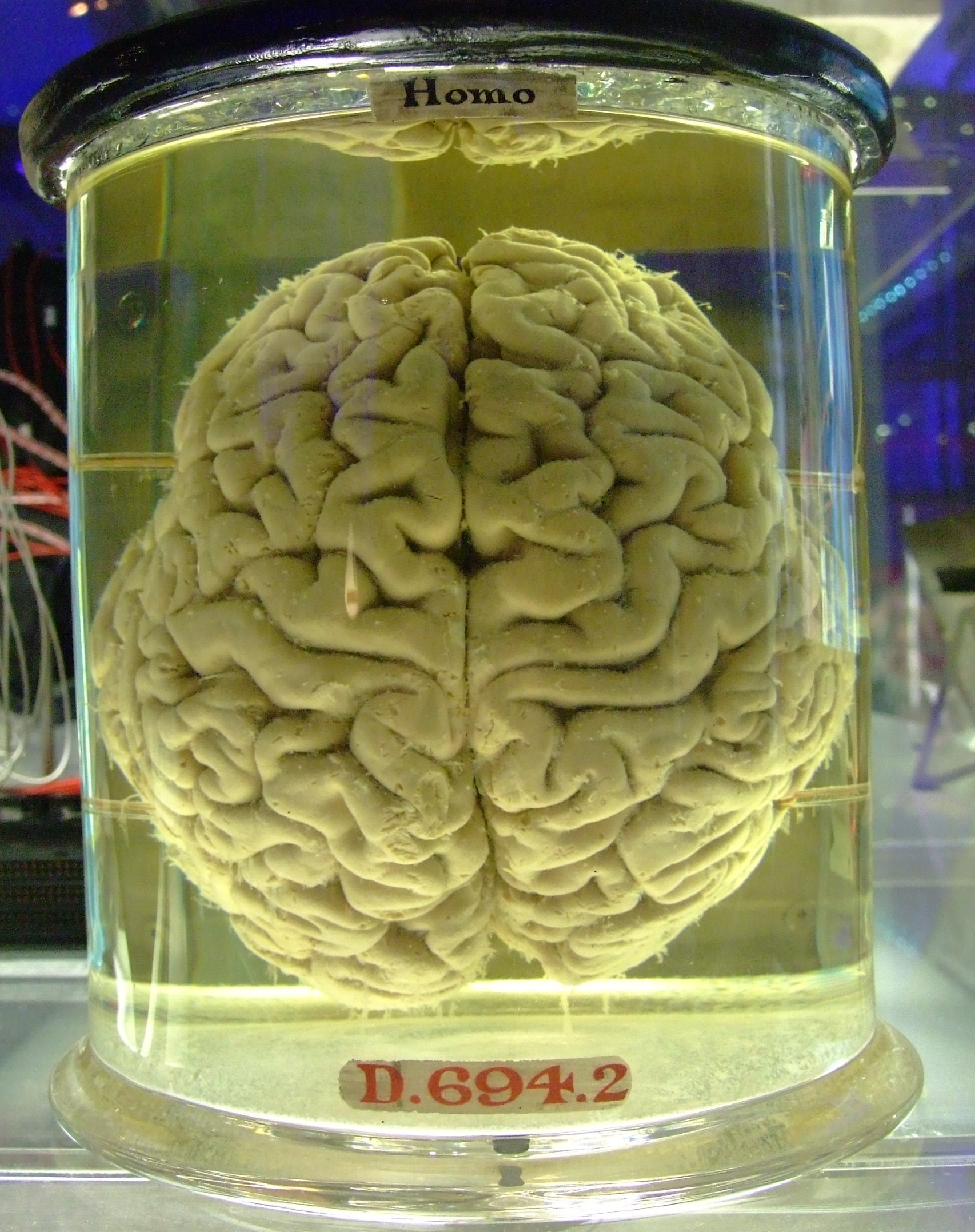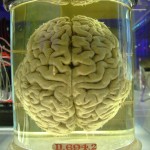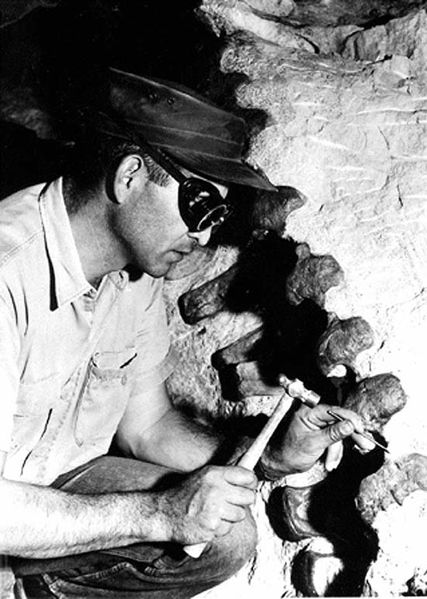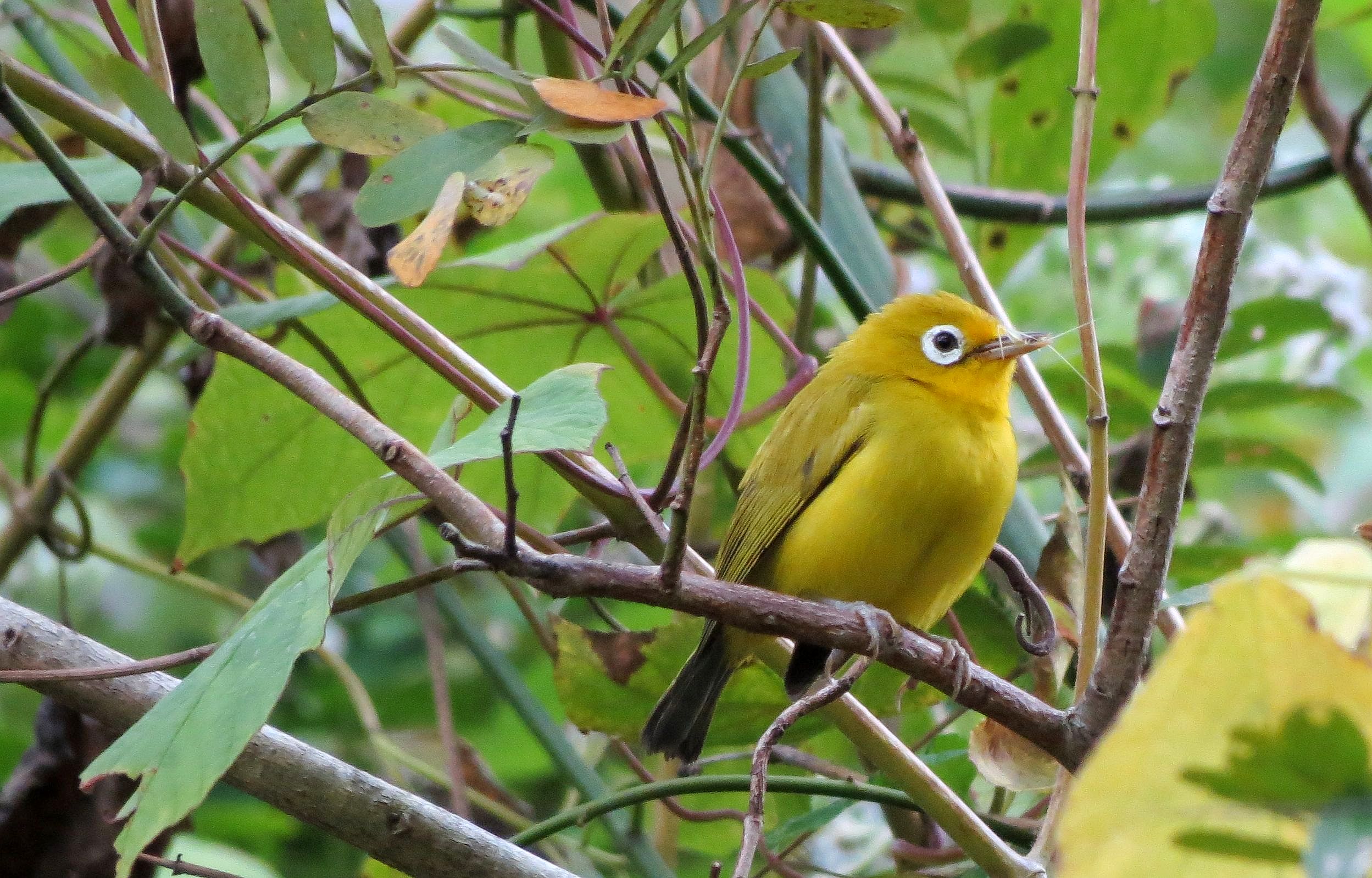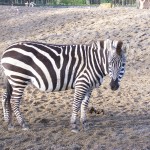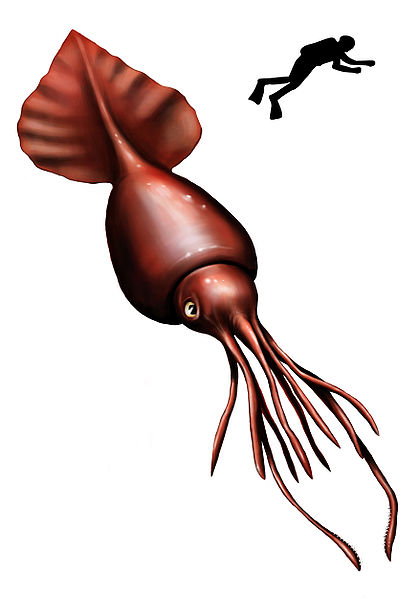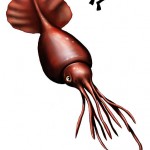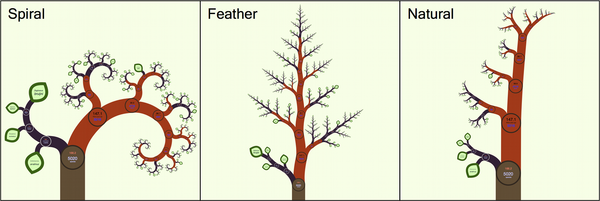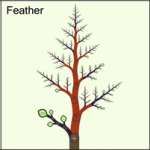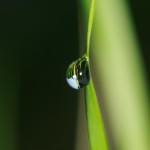Scientific conferences can be a great way of meeting people, getting and sharing new ideas, and networking with people from, often, all over the world. And they can be good fun too! On October 25th-28th several people in the School travelled to Norway for the annual conference held by the Scandinavian Association for Pollination Ecologists (SCAPE). This meeting is held for ecologists working with pollination, plant reproductive biology and other related fields and it attracts a small but expert crowd from Scandinavia, Europe, and sometimes even further afield (this year there were attendees from Brazil and Israel!). Continue reading ““See you later, pollinator””
The scariest object in my office
As it is Hallowe’en season, I thought I’d write a blog post about the scariest and most horrifying object in my life at the moment – my To-Do list. This monstrous beast lurks on my desk full of tasks ranging from the mundanely specific like “write reference letter for student X” to the vague and rather more time consuming “write paper on Y”. Inevitably some of the things on the list will never get done and will slowly drop off the list like the withered limbs of a leper (I regularly re-write the list to make sure I don’t forget anything important – and also to have the satisfaction of crossing off “write list”). Others, like teaching, will get done but not until the last possible minute. I try to look at it as little as possible to avoid scaring myself into total inaction.
I would love this post to be an amazing revelation about how to make the list get magically shorter, but unfortunately the only option seems to be actually doing the things on the list (or delegating them to someone else)! Instead I decided to analyse my list to see where I am – or should be – spending most of my time. Unsurprisingly teaching makes up a good chunk of it, followed by admin and then finishing up papers from my post-doc! But after looking at the things I spend huge chunks of time on, I looked at the things that take just an hour or two hours at a time. I realized how many of these items fell into the category of academic altruism.
I think of academic altruism as doing anything in academia that helps others but doesn’t directly help you. Reviewing papers is a really obvious example. The recent controversy over academic publishing and open access has thrown this problem into the limelight, and many people have come up with excellent solutions to the problem (for example Jeremy Fox and Owen Petchey’s excellent “Pubcreds” idea). But academic altruism is far more than just reviewing papers. We all help students and colleagues by commenting on manuscripts, discussing ideas, helping with analyses and promoting each others’ papers. PhD students do this as much as (and perhaps more than) faculty members. Those with skills in data analysis (and the patience to help novices) tend to end up doing this even more than everyone else (apologies to Luke McNally who spent 2 hours teaching me MCMCglmm last week for no academic reward apart from my eternal gratitude!).
I think it’s fairly obvious that academic altruism is not generally good for career progression. Of course there may be occasions where we gain collaborators or authorship on a paper through helping others. But mostly academic altruism takes up time with little return for our time investment. That’s not to say that I think it’s a bad thing. In fact, interacting with others in this way is part of what I love about science. But there must be a cost to those who do this a lot, and a benefit to those who refuse to engage with others. Although I’m sure hiring committees like to hear about the extra help you give others, I doubt they would rate that higher than the extra high-profile papers you could have written if you were more selfish with your time. Research also tends to suggest this cost is higher for female scientists because we associate more with “caring roles” (or as our HoD puts it – “we’re less able to leave a student crying in the corridor”).
Open Access week has led to a lot of discussion of altmetrics, so what about a metric for academic altruism? Could we think of a way to do this? Could we get colleagues, students or the scientific community to rate our “selflessness”? Do hiring committees consider these factors, or do extra papers trump everything else?
Well there’s something to mull over this evening as you hide from Trick or Treaters with the lights off. And now I can go back to my To-Do list and cross off “write blog post”. Yay!
Author
Natalie Cooper: ncooper[at]tcd.ie
Photo credit
wikimedia commons
Consciousness cut down to size
Adam Kane recently wrote a blog post on the problem of consciousness. I disagree with most of what Adam said so thought I’d write a reply post.
Adam’s post smacks of a dualism that has persisted since the earliest musings on the problem of consciousness. In essence dualism is the claim that mental processes are in some ways non-physical, that there is a “ghost in the machine” so to speak. In my opinion dualism has been one of the most obstructive and damaging ideas that philosophy has ever produced, with a pervasive legacy that can be seen in concepts of human superiority, and in the justification of inhumane treatment of animals. However, that’s an issue for another day.
For me, Adam’s conclusion of dualism does not follow from his arguments:
1. Let’s first take his example of Chalmer’s thought experiment of automaton-like zombies. Such zombies are logically possible. However, this possibility doesn’t imply dualism. They would imply dualism if they were actually physically identical in every way to a conscious individual, including the exact wiring and firing of their neurons. Whether an exact physical replica of a conscious human could be unconscious is an empirical question. Simply posing the question does not provide one iota of evidence for dualism, it simply shows that dualism is logically possible. That there really are invisible turtles sitting in all our heads controlling things is also logically possible! Now let’s consider the more restricted case where the exact wiring and firing of these zombies neurons is not identical to ours, but they are for all practical purposes indistinguishable in their behaviour. We then have a problem over how natural selection could have favoured consciousness. However, this again does not imply dualism. Consciousness does not need to be adaptive to be physical. It may be a by-product of selection for information processing, i.e. a spandrel. It is obviously a fallacy to claim that because snail’s brood chambers (the classic example of a spandrel) arose non-adaptively that they are not physical. To explain the evolution of consciousness is definitely an unresolved challenge, but this challenge does not imply dualism.
2. Adam’s argument that neurons are made of the same stuff as heart cells, and therefore aren’t the key to consciousness is a misunderstanding of how neuroscience searches for correlates of consciousness. An individual neuron may not be that special but they are collectively unique as cells in that they are connected in neural networks of mind-boggling complexity. We don’t yet have anywhere near the computing power to simulate what the human brain does, so its computational capacities are currently unknown, but definitely huge. Neuroscience is a field still very much in it’s infancy, and I have little doubt that it will begin to shed light on how consciousness is achieved over the next few decades. Hopefully gaining more insight into the how will stimulate more evolutionary biologists to tackle the why.
Consciousness is a hard problem, but it being physical should be our null position. History has shown that explanations based on non-physical phenomena have fallen time and again under empiricism’s mighty sword. As such, our priors for the how and why of consciousness should be heavily skewed towards the physical.
Author
Luke McNally: mcnalll@tcd.ie
Photo credit
Wikimedia commons
Zombies and the problem of consciousness

Seeing as it’s Halloween, I’m going to play devil’s advocate with the help of some zombies and explore the Gordian knot of consciousness. I think most scientists would hold a physicalist view when it comes to their view of how the world ‘really’ is. That is to say, objectively speaking, all there is to the universe are the various interacting fields and particles of physics. The problem with such a view is that our conscious selves prove very difficult to incorporate into this picture. We are subjective beings. Finding out how consciousness came about is known as the hard problem of consciousness.
David Chalmers, a philosopher of mind, formed a clever thought experiment to illustrate the difficulty. Okay, so imagine a world where everyone has the outside appearance of being conscious, for instance they laugh when you tell a joke, shirk away from pain, gaze at sunsets etc., the only difference is that they have no internal subjectivity, they’re automata or zombies. I don’t see any problem with conceiving of such a place, so it looks like a possibility. But if these automata are indistinguishable from us on the outside in terms of their behaviours and actions then evolution won’t be able to distinguish between them and us, so why consciousness? It looks like an unnecessary extravagance. It also suggests that there is something more to the world than the physical, because our world isn’t like that, we, or at least I, know I’m conscious.
It seems to me that our theories as to how and why consciousness evolved have fallen short in their efforts. A lot of work is dedicated to finding the neural correlates of consciousness, but that doesn’t get us anywhere! Neurons are made up of the same material as the rest of the cells in our body, but heart cells don’t generate conscious beings so why treat neurons differently. So we’re really left with two questions. How do physical things generate subjective thought? And once we get there, why is it advantageous to be conscious? It’s called the hard problem for a reason.
Author
kanead[at]tcd.ie
Photo credit
wikimedia commons
Dinosaur detective stories
“Being a paleontologist is like being a coroner except all the witnesses are dead and all the evidence has been left out in the rain for 65 million years” Mike Brett-Surman, 1994
I am very much for palaeontology and the enthusiasm for the science today but there was a time when even the mighty dinosaurs were out of fashion. During the 40s and 50s they were thought of as animals who had been destined for extinction, little more than children’s monsters.
Perish the thought. That changed in both academic and public circles when palaeontologist John Ostrom and his student Bob Bakker came on the scene during the 60s and 70s. The trigger of this ‘dinosaur renaissance’ was Ostrom’s description of Deinonychus which he deemed a fleet footed, endothermic, bird-like animal. This was a world apart from the view of dinosaurs as cold-blooded, tail dragging, sluggards. In Bakker’s book, the Dinosaur Heresies, he presented a persuasive body of evidence to support the idea that dinosaurs were endothermic. Bakker is a great artist too and it really helped to get his point across. You can see his influence in the similarity of the Velociraptors of Jurassic Park infamy to his artwork. This was all very exciting. Now we had animals seemingly on a physiological par with mammals and birds. What I find so impressive is that we can still make inferences about the physiology of long extinct animals so long as we marshal enough evidence.
But the case for endothermy wasn’t so clear cut. The bones of reptiles and amphibians, which are demonstrable ectotherms, show seasonal bone growth and we can see similar patterns in the fossils of dinosaurs. An impasse presented itself.
Until now anyway. The issue, it seems, is that we weren’t looking in the right place. A recent paper in Nature shows why. The authors of the study looked at the histology of modern ruminant mammals revealing that they also display seasonal bone growth and that this can be extended to all endotherms with a constant body temperature. So seasonal bone growth can no longer used as an argument for cold blooded dinosaurs. I think it’s interesting that all it took was for someone to look at modern mammals.
Author
Adam Kane: kanead[at]tcd.ie
Photo credit
wikimedia commons
Sulawesi field report
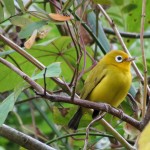
July and August of this year saw members of the Behavioural and Evolutionary Ecology research group embark on another field season studying the birds of tropical south-east Sulawesi, Indonesia. Principal investigators Dr. Nicola Marples and Dr. Dave Kelly were joined this year by PhD student Seán Kelly, as well as a number of undergraduates from the university. This year’s expedition, carried out in collaboration with Operation Wallacea, consisted of two teams: the mist netting team, led by Dr. Marples and Dr. Kelly, and the behavioural team led by Seán Kelly.
The netting team trapped birds using mist nets at various locations on Buton island, mainland south-east Sulawesi and Wangi-wangi island (of the Wakatobi archipelago). While small passerines such as white-eyes, sunbirds and flowerpeckers were the target species, individuals from a total of 35 species were caught. The season proved to be a great success with over 300 birds trapped and processed. Data on plumage, morphology, age, sex and breeding condition were collected from each bird, which was colour-ringed and released unharmed. A small number of body feathers were also plucked from each bird for later genetic and stable isotope analyses.
The behavioural team spent the season on various islands of the Wakatobi archipelago collecting detailed behavioural ecology data on the white-eye, sunbird and flowerpecker species present. This included information on their diets, competitors, preferred habitats, social habits, courtship and breeding, as well as their foraging and flocking behaviours. Data collection took place in the early morning and evening, walking 1 km transects through scrub, farmland or forest edge habitats. This resulted in some fantastic insights into the behaviour and ecology of these poorly studied species.
From analysis of the plumage, morphometric and genetic data we have found a number of significant differences between bird populations on the Wakatobi archipelago and mainland Sulawesi, as well as between populations within the Wakatobi. It is hoped that the behavioural data gathered this season will help us to understand the selective pressures driving this divergence, giving us further insight into the evolution of this region’s fascinating avifauna.
Author
Seán Kelly: kellys17[at]tcd.ie
The not so black and white story of why the zebra got its stripes
Why are zebra black and white? I would hazard a guess your answer is camouflage, and you would be right… well, mostly. I would then bet you got the beast from which the zebra is hiding wrong. While the black and white stripes might disrupt outline of a zebra in the eyes of an ambushing lion or sprinting cheetah, the scientific evidence points to a much smaller blood thirsty devourer of zebra.
Since the 1970s, experiments have shown that Tsetse flies are less attracted to black and white striped patterns than plain black, white or grey colours. Most recently, a series of experiments conclusively showed that another group of flies, the horseflies, are far less attracted to zebra-stripe patterns than plain, black, white, brown or grey surfaces. Furthermore, narrow bands of stripes are even more effective at keeping hidden from the horseflies, and it’s perhaps no surprise that the legs and heads of zebra contain the closest spaced stripes where blood vessels lie perilously close to the skin surface of these key anatomical locations. The legs being needed to flee from the lions and the head for thinking.
Of course, there may be other factors that simultaneously favour such a striking colour pattern. Regardless though, some interesting evolutionary points follow the “camouflage from flies” idea. Chief among them being: if stripes are so good at hiding from horseflies, then why do Eurasian horses not possess the same pattern where horseflies are also common and a nuisance?
So while the “why” of the zebras stripes seems to have some scientific evidence at last, the “how” they got their stripes is another blog topic for another day and involves leopards, cells, computers and a bit of maths.
Author
Andrew Jackson: a.jackson@tcd.ie
Photo credit
Andrew Jackson
All the better to see you with
A recent discovery of a large eye found by a beachcomber in Florida initiated a flurry of internet speculation of its mysterious owner. The contenders for ownership included colossal squid, thresher sharks and a range of mysterious sea creatures both real and imagined.
While the owner of the tennis ball sized eye has recently been attributed to a swordfish, it is perhaps not unreasonable to attribute such a large eye to creatures of monstrous sizes, especially considering the eye rivals the size of those of the largest animals to every exist, the cetaceans.
So why don’t we always find the largest eyes in the largest creatures? Moreover, why are the largest eyes found in such an unusual and evolutionarily distant set of creatures including colossal squid, the extinct ichthyosaurs and to a lesser extent swordfish?
One study recently published in Current Biology has tried to address this mystery by looking at the football sized eyes of the Colossal squid. The eyes of Giant and Colossal squid are the largest of any extant animal with an eye diameter up to three times larger then the next largest eyes, that of swordfish and whales, hence dwarfing the eye found on the beach.
Nilsson et al used model simulation comparing the benefits arising from increasing eye size in relation to spotting point light sources, dark objects against a light background (diurnal vision) and luminescent objects against dark background. They found that in bright-lit areas the benefits arising from larger eyes diminish greatly meaning that whale eyes size represents the limit in terms of visual ability in these environments. However in cases where large luminous objects are against a dark background, extremely large eyes become beneficial again.
Such scenarios of bright objects against a dark background are found in the deepest parts of the oceans where various bioluminescent organisms live. Movement through such waters can disturb such organisms, in particular bacteria, which cause them to create a glowing silhouette of the animal. This is where the advantage arise for the squids large eyes as they can detect the disturbance of its main predator the sperm whale from over 120 meters away, allowing it to take evasive action.
This technique only seems to be advantageous for spotting large predators, which explains why colossal squid and also perhaps why ichthyosaurs had such large eyes, with large pliosaurs their potential predator.
Author
Kevin Healy: healyke@tcd.ie
Photocredit
wikimedia commons
The tree on the web
Visualising the tree of life is a challenge for even the most artistically attuned in the scientific community. The problem is the sheer number of species that we need to represent, literally millions. But I think the latest attempt meets the challenge. The developers of OneZoom, the name of the new approach, argue that we need to escape the “paper paradigm”. We should instead make full use of the benefits that digital interactive displays grant us. Worrying that our efforts won’t translate to the printed page is an exercise in Luddism.
So, why is OneZoom so successful? The display takes its cues from Google Earth, the virtual globe, but whereas in Google Earth you move from continents to countries in OneZoom you zoom in from class to species. It’s even better than that because the whole tree has a fractal geometry, the self similar patterns you can see with real trees, which allows for an intuitive zoom function. One critique is that the fractal geometry ends up displaying the groups that diverged earlier (e.g. monotremes) as larger than the more recent groups (e.g. placentals), suggesting some significance when there is none. So far only the mammals are on show but it’s early days yet.
There are a number of other really useful features like the ability to play the evolution of the whole tree backwards and forwards in time so you can see exactly when a given species, genus or what have you, diverged. The potential for science communication as well as research is great. But enough of me talking about what is best seen and check it out for yourself. The details of OneZoom are available in PLOS Biology.
Author
Adam Kane: kanead[at]tcd.ie
Photo Credit
Rosindell J, Harmon LJ (2012) OneZoom: A Fractal Explorer for the Tree of Life. PLoS Biol 10(10): e1001406. doi:10.1371/journal.pbio.1001406
Hotbeds of photosynthesis evolution
Grasses rank among the world’s most ecologically and economically important plants including wheat, barley, rice and maize. Evolution of the C4 syndrome has made photosynthesis highly efficient in about half of their species, inspiring intensive efforts to engineer the pathway into C3 crops to improve drought and heat tolerance. An international collaboration called the Grass Phylogeny Working Group (including Trevor Hodkinson, TCD) produced one of the most comprehensive phylogenetic trees of the grasses and used this to show how C4 evolution has evolved. Results published in the journal New Phytologist show that it has evolved repeatedly 22-24 times and within two groups in particular.
Author
Trevor Hodkinson: hodkinst[at]tcd.ie
Photo credit
Wikimedia commons





